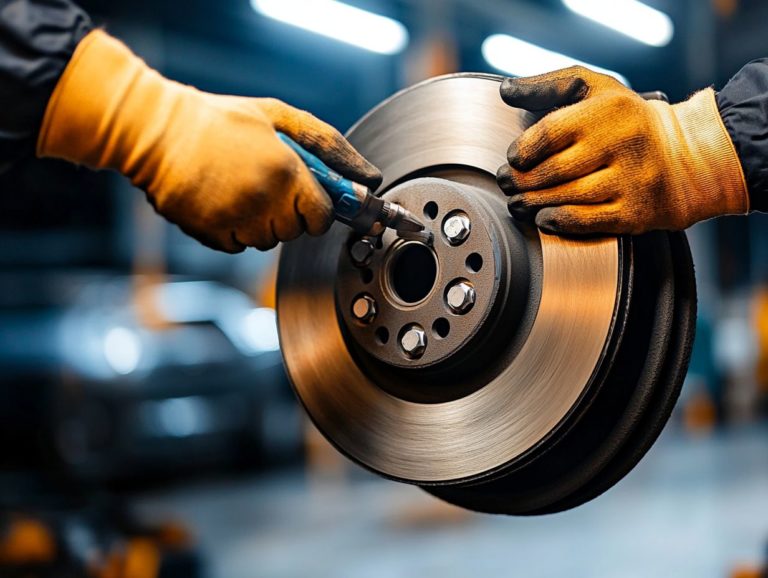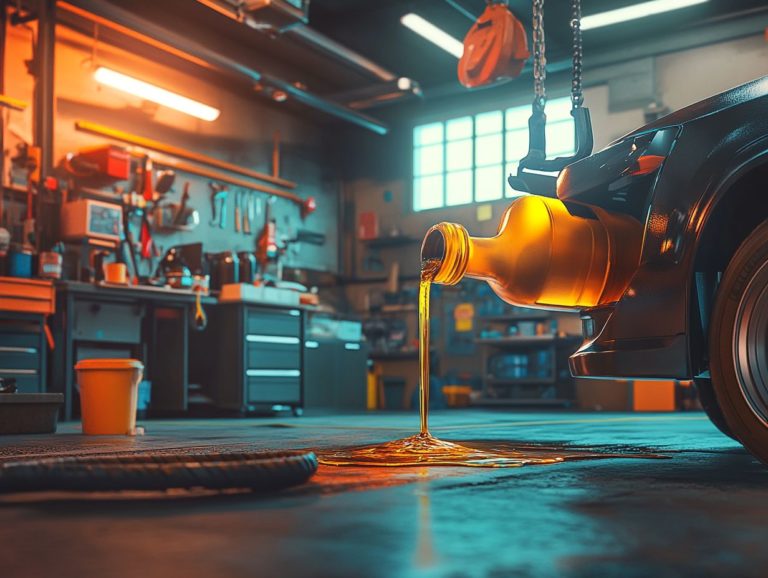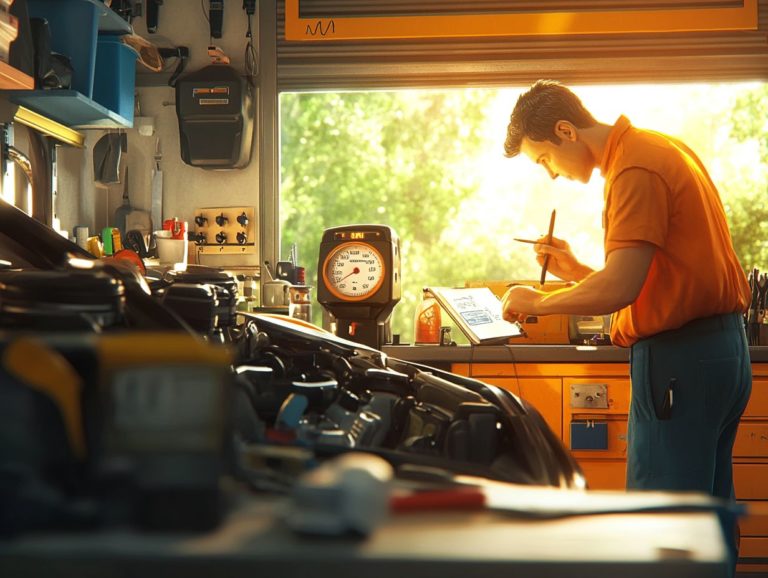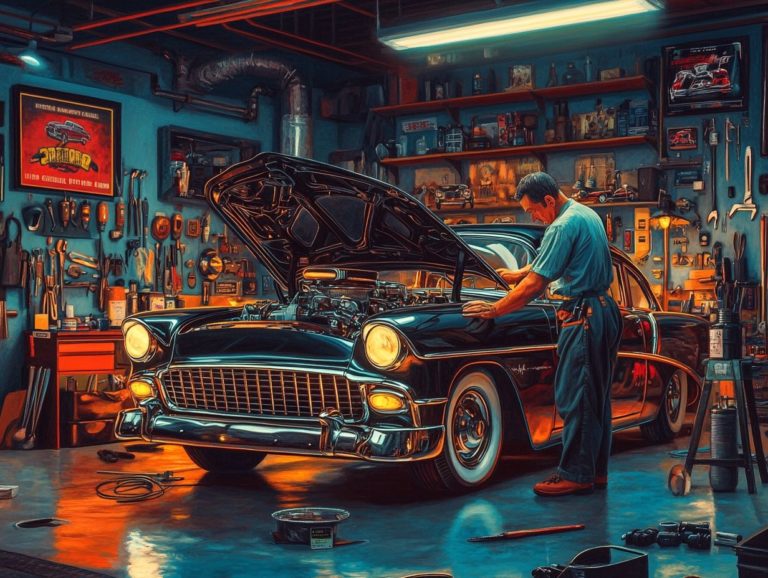How to Inspect Your Car Before a Road Trip
Planning a road trip is thrilling! But don’t let excitement blind you preparing for a safe journey is just as exciting.
Conducting a thorough pre-trip inspection of your vehicle is crucial to ensure everything runs smoothly. From checking your tires and lights to inspecting under the hood, every detail holds significance.
This guide will walk you through each step of the inspection process, highlight what to look for, and suggest must-have items for your emergency kit.
Buckle up you’re on the brink of a hassle-free adventure!
Contents
Key Takeaways:

- Performing a pre-trip inspection is key to an unforgettable adventure.
- Check your tires, lights, windshield, and fluid levels before hitting the road to avoid potential issues.
- Don’t forget to inspect under the hood and pack an emergency kit to be prepared for unexpected situations.
Preparing for a Road Trip
Preparing for a road trip is a vital task. It requires thorough inspection and maintenance of your vehicle for safety and performance.
Check key components like tire pressure and vehicle fluids. Arrange for an oil change if needed, as it helps keep your engine running smoothly. Additionally, pack an emergency kit for peace of mind.
Why Pre-Trip Inspection is Important
A pre-trip inspection is essential for your road safety and to avoid car problems that could lead to accidents or breakdowns during your travels. Make sure to follow a guide on how to inspect your car for seasonal changes.
Taking the time to conduct thorough checks significantly reduces the risk of common road problems, such as tire blowouts or brake failures. Key inspections include evaluating tire pressure, which ensures optimal grip and fuel efficiency, as well as performing brake checks to maintain effective stopping power.
By prioritizing these inspections, you safeguard not only your life but also the lives of others on the road. Consistent pre-trip evaluations can enhance your vehicle’s longevity and help you avoid costly repairs down the line, ensuring a smoother ride every time you set out.
Exterior Inspection
Conducting an exterior inspection is essential before you set off on a road trip. This step involves examining key components of your vehicle that significantly affect both safety and performance on the road. To ensure your preparation is thorough, consider reviewing what you should check before a long drive.
Pay close attention to tire pressure, ensure your headlights are functioning properly, and check for a spare tire. Taking the time for this thorough check will set the stage for a smooth and safe journey ahead.
Tires and Wheels
Tires and wheels are crucial components of any vehicle. Maintaining proper tire pressure and alignment is essential for safe handling and optimal fuel efficiency.
Before you set off on a road trip, it’s imperative to check the tire pressure of each tire, including your spare. This simple task can significantly impact both your vehicle’s performance and your safety. You can easily accomplish this using a tire pressure gauge, which is available at gas stations or can be conveniently purchased at automotive stores.
Also, check that your tires are aligned properly; misalignment can lead to uneven tire wear and compromise handling, particularly on long drives. Don t underestimate the importance of a fully inflated spare tire. Emergencies can arise when you least expect them, and having that extra tire ready can provide you with peace of mind in unexpected situations.
Lights and Signals
Checking your headlights and other lights is an essential step in your exterior inspection process. These lights are crucial for ensuring visibility and effective communication with other drivers on the road.
When your headlights work properly, they illuminate the path ahead. Brake lights clearly signal your intention to stop, and turn signals indicate your direction each one is vital in preventing accidents.
Neglecting to confirm that these lights are operational can lead to severe consequences. You may face reduced visibility in low-light conditions or fail to alert nearby vehicles of your actions, significantly increasing the risk of collisions.
Malfunctioning lights can also lead to legal penalties, and in some cases, result in vehicle failure during routine inspections. Therefore, regularly checking these signals isn t just a good habit; it s a necessary responsibility to ensure safety for everyone on the road. Don t wait check your lights today for a safer drive!
Windshield and Wipers
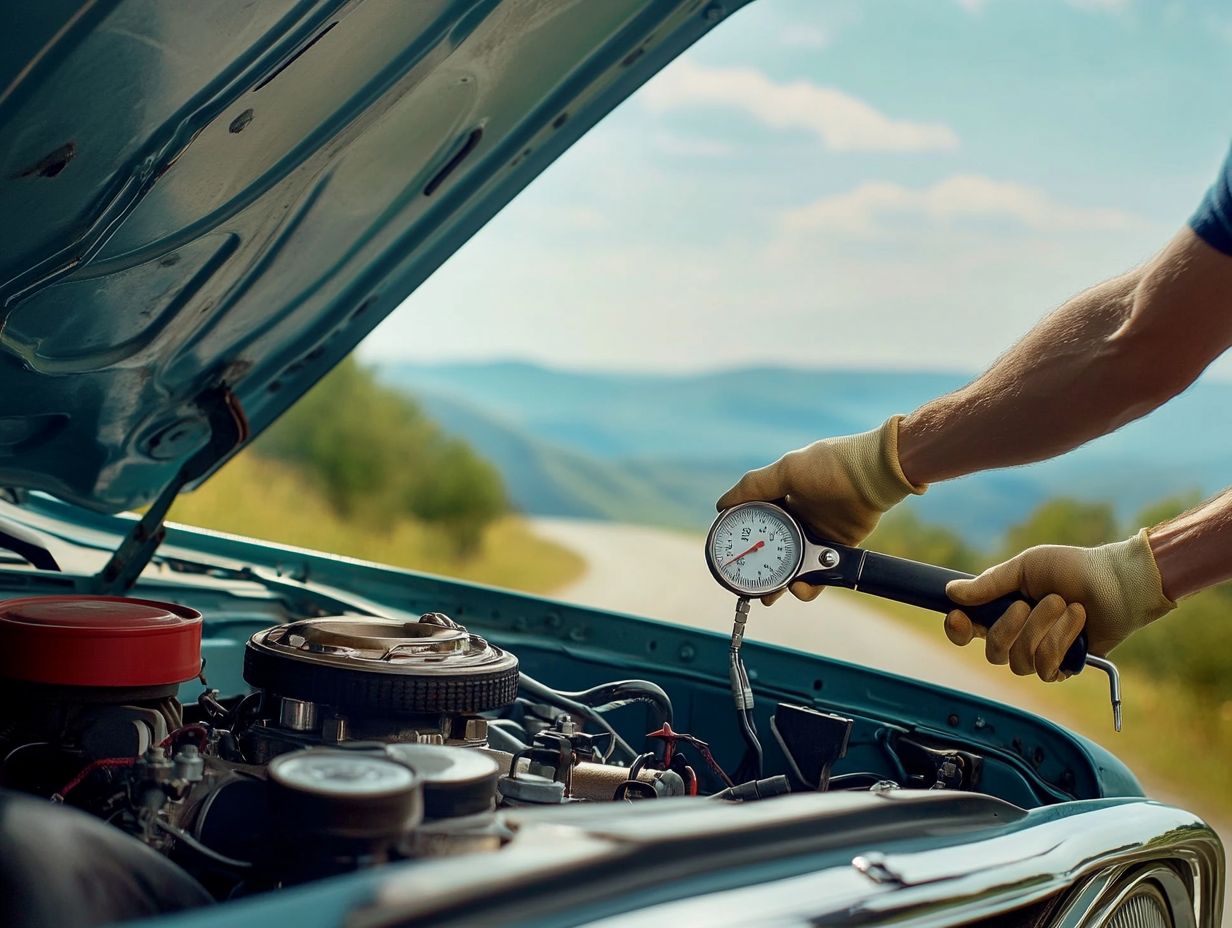
The condition of your windshield and wiper blades plays a crucial role in ensuring visibility during your road trip. Make sure your wipers and windshield are in great shape before hitting the road.
Regularly inspect your wiper blades for any signs of wear and tear, like cracks or frayed edges. A quick visual check can save you from potential safety hazards later on.
Keeping your windshield clean not only enhances your view but also minimizes glare and streaks that can be distracting. Clear visibility is paramount for safe driving, especially in adverse weather conditions such as rain or snow, where the risk of accidents escalates.
Take a moment now to check these components. A little effort can ensure a safe and smooth journey!
Interior Inspection
Conducting an interior inspection is essential for ensuring that all dashboard indicators and gauges are operating correctly. It also allows you to confirm that fluid levels are sufficient, which is vital for a safe and comfortable road trip.
Dashboard and Gauges
The dashboard and gauges are your vehicle s vital signs, delivering real-time insights about critical aspects such as engine oil levels, coolant status, and other essential metrics.
Regularly monitoring these indicators is key to ensuring your vehicle s longevity and performance. For example, a quick glance at the dipstick a tool that checks oil levels in your engine can reveal whether your engine oil is at the right level. Too low, and you risk engine damage; too high, and you could encounter a different set of problems.
Keeping an eye on coolant levels is essential for preventing overheating, particularly during long drives or in extreme weather conditions.
By understanding the importance of these gauges, you can take proactive measures to maintain your vehicle’s efficiency and reliability, ensuring it remains a trusted companion on the road.
Seatbelts and Airbags
Ensuring that your seatbelts and airbags are in prime condition is a crucial element of your interior inspection, profoundly influencing your safety while navigating the open road.
Regularly check your seatbelts for any signs of wear and tear. Look out for frays or malfunctions that could prevent them from locking securely during a sudden stop. You can often monitor the functionality of airbags simply by keeping an eye on your dashboard indicators; if the airbag warning light appears, it signals a malfunction that requires your immediate attention.
These safety features are designed to work together during a crash, effectively protecting the lives of all passengers. By using seatbelts correctly and understanding how airbags deploy, you can dramatically reduce the risk of injury. This highlights the importance of making these checks an integral part of your routine vehicle maintenance.
Fluid Levels and Condition
Checking the fluid levels and condition in your vehicle is essential for ensuring best performance and longevity. Pay close attention to the essentials, such as engine oil, coolant, and brake fluid.
Regular assessments can help you avoid potential issues that might arise from neglecting these critical components. For example, engine oil lubricates moving parts, reducing wear and preventing overheating. Coolant safeguards the engine against extreme temperatures, while brake fluid is vital for safe stopping power, transferring force from the brake pedal to the brake pads.
By routinely inspecting these fluids and addressing any discrepancies like low levels or contamination you can significantly enhance both the safety and efficiency of your vehicle. Staying on top of these checks means your rides will be smoother and more enjoyable!
Under the Hood Inspection
Conducting a check of your vehicle’s engine and other components is essential for identifying potential issues that could impact your vehicle s performance during a road trip. Pay particular attention to critical components such as the battery, engine, and the parts that help your vehicle handle bumps and turns to ensure a smooth journey ahead.
Battery and Cables
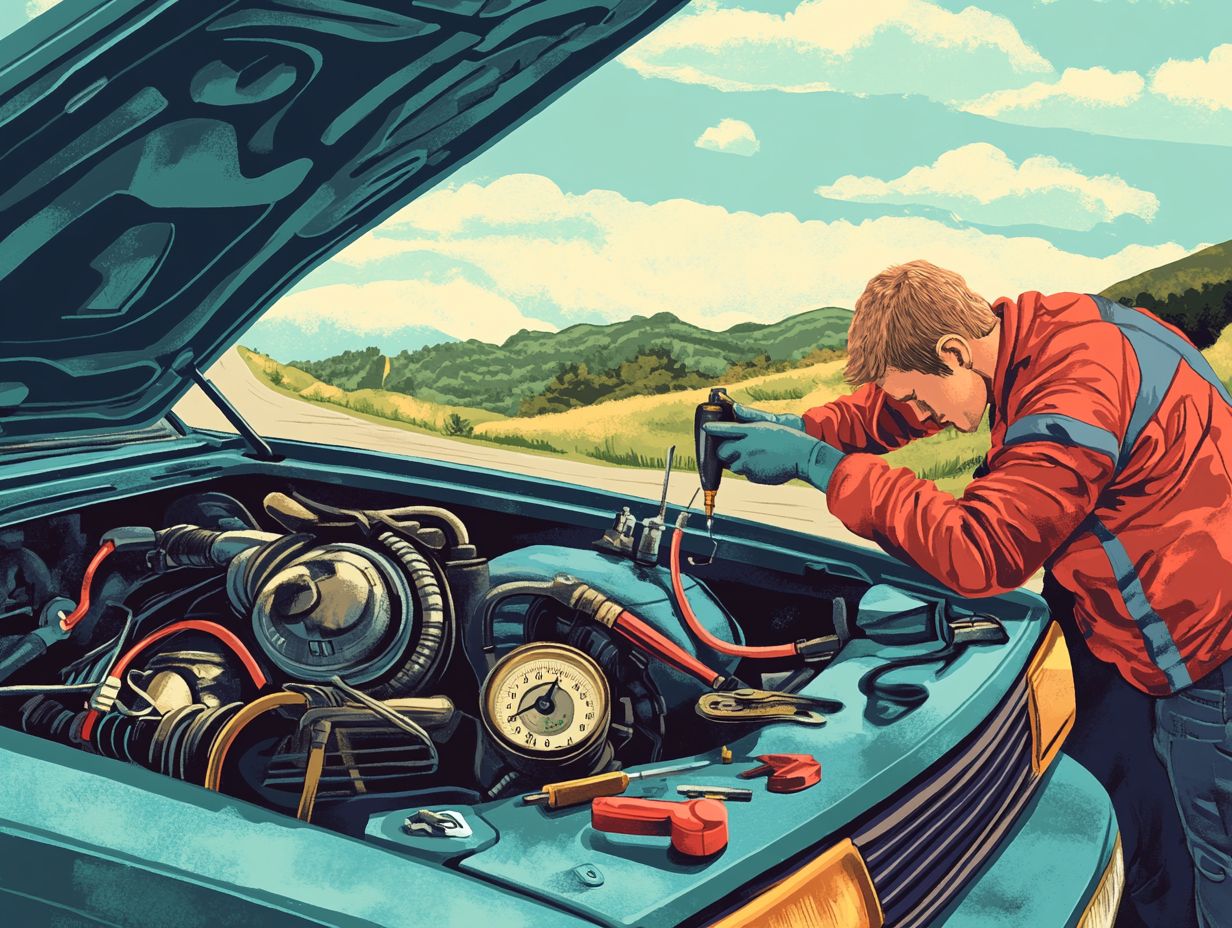
A comprehensive inspection of your battery and its cables is essential for preventing breakdowns, particularly during those long, adventurous road trips.
Regular checks help you spot early signs of corrosion, which often appears as a white, powdery residue around the terminals. Ensure that your cable connections are snug and free from rust this not only boosts conductivity but is also crucial for your vehicle’s overall performance.
A well-maintained battery guarantees that your engine starts with ease and all electrical systems function smoothly, which is key to an optimal driving experience. Act quickly if you hear unusual sounds or see dimming lights these could mean your battery is in trouble!
Engine and Belts
Inspecting your engine and belts is essential for ensuring both driving safety and reliability; after all, worn or damaged components can lead to serious mechanical failures.
Regularly checking these critical parts allows you to catch potential issues before they escalate. For instance, look for signs of fraying, cracking, or glazing on the belts these are telltale signs of wear and tear. A quick visual inspection under the hood can also reveal misalignment or improper tension, both of which are crucial for optimal performance.
Don’t ignore unusual noises either; squeaking or squealing sounds during operation can signal that maintenance is needed. Replacing worn belts at the manufacturer-recommended intervals is essential for preventing breakdowns and extending the life of your engine.
Brakes and Suspension
The condition of your brakes and suspension system is crucial for safe driving, making it essential for you to conduct a thorough inspection before embarking on any road trip. Properly functioning brakes can mean the difference between a safe stop and an accident, while well-maintained suspension components significantly enhance your vehicle’s stability and handling.
- Start by visually inspecting the brake pads and rotors for wear, and listen for any unusual noises when you engage the brakes.
- Next, check the brake fluid levels and look for any leaks in the lines; this small step can save you big headaches down the road.
- For the suspension, examine the shock absorbers for any signs of fluid leakage, and make sure there are no cracks in the springs.
- Don t overlook the alignment; misalignment can lead to uneven tire wear and steering issues, ultimately compromising your safety.
Regular checks on these systems can safeguard both you and your passengers, ensuring peace of mind on every journey.
Emergency Kit Essentials
An emergency kit is your best friend on the road! It keeps you ready for any surprises that might arise during your journeys.
Maintaining an emergency kit at your disposal is essential for road safety, allowing you to be well-prepared for unexpected situations.
What to Pack for Unexpected Situations
When preparing your emergency kit, it s essential to include items that can assist you in various unexpected situations, like a tire repair kit and first aid supplies.
These essentials can make all the difference in the face of unforeseen challenges. A flashlight is crucial for navigating dark areas during a roadside emergency. Non-perishable snacks help maintain your energy levels if you find yourself stranded for an extended period.
A multi-tool serves multiple functions, from opening containers to making quick repairs. Don t miss out! A reflective warning triangle and flares can alert oncoming traffic to your presence. Having a blanket on hand provides warmth in chilly weather.
A well-stocked emergency kit gives you peace of mind. It prepares you for any road challenge.
Frequently Asked Questions
What are the essential things to check before a road trip?
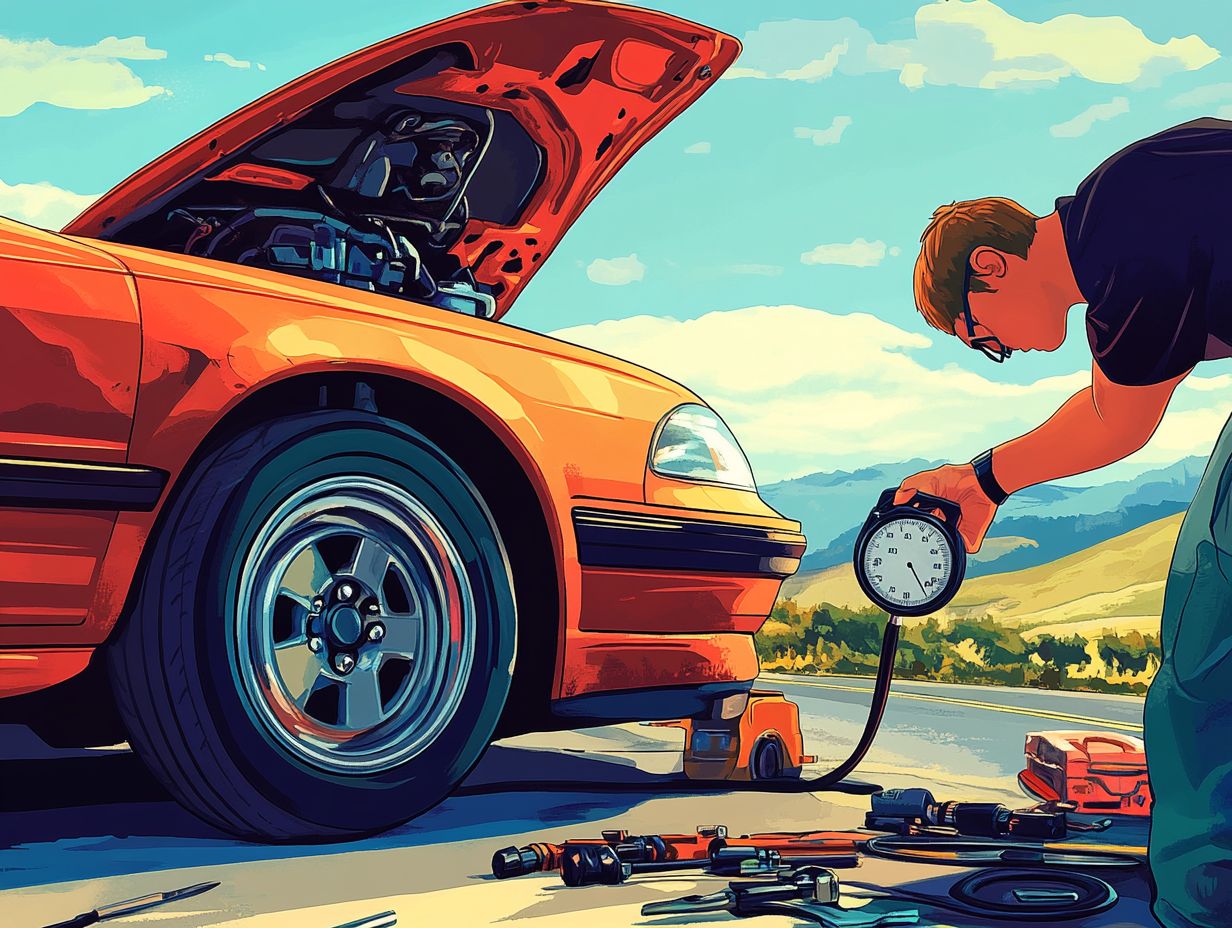
Before embarking on a road trip, check your tire pressure, oil level, brake pads, and lights. Additionally, consider reviewing this guide on how to prepare your car for road trips to ensure all aspects of your vehicle are in top condition. Inspect your wiper blades, coolant level, and battery health.
How do I check the tire pressure?
You can check the tire pressure using a simple device called a tire pressure gauge, available at most gas stations. Unscrew the valve stem cap, place the gauge onto the valve stem, and read the pressure.
How do I know if my oil level is sufficient?
To check the oil level, park your car on level ground and let the engine cool down. Pull out the dipstick, wipe it clean, reinsert it, and pull it out again. The oil level should be between the two marks on the dipstick.
What should I look for when inspecting my brake pads?
When inspecting your brake pads, look for signs of wear such as unevenness or low thickness. Check the brake fluid level and ensure there are no leaks in the system.
How do I check my wiper blades?
To check your wiper blades, run your finger along the edge. If you feel roughness or see cracks or tears, it’s time to replace them. It’s also a good idea to check the windshield washer fluid level.
What should I do if I notice any issues during the inspection?
If you notice any issues during the inspection, have them addressed by a mechanic before hitting the road. It’s always better to be safe than sorry, and a professional can ensure your car is ready by following tips on how to prepare for a road trip maintenance check.
Prepare your kit today and hit the road with confidence!

